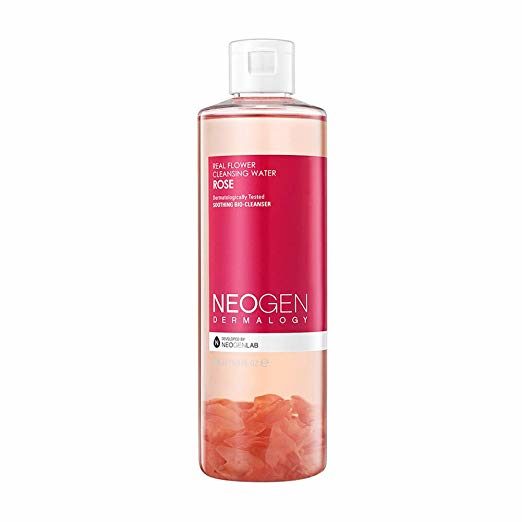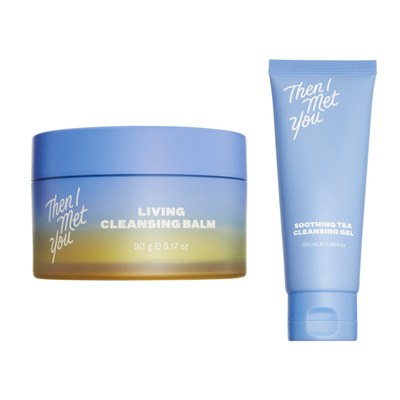Welcome to Step by Step, a new series where influencers, beauty professionals, Klog readers, and Soko Glam staff will be sharing every step in their current skin care routines. Have someone you want to be featured, or think YOU should be? Let us know in the comments below!
Despina Daniilidis devotes her Instagram feed (you’ll find her @desseydoll) to her latest skin care revelations and you can trust her recommendations – she’s a licensed esthetician! Despite her expertise, she deals with skin highs and lows just like the rest of us. Here, she chronicles a recent skin snafu, plus all the products she’s currently putting on her face.
I’m not crying. It’s allergies. I don’t know why, but the pollen decided to come for my eyes this season. It’s not the worst, but it’s frustrating to deal with. With tearing comes eye swells and itches. For a fact, I know it’s not eye cream because I barely use eye creams.
So, instead of just using allergy medicine, I have to take a step further to treat my skin irritations, especially since the undereye area is so fragile. Using ice to soothe redness and depuff actually helped quite a bit, allowing for a cooling effect as my eyes felt like they were burning. Besides wearing sunglasses, I need a product that’ll be ideal for on the go that’s pretty much hands free (where I don’t need to put my hands on my face!). The Cosrx’s Lock The Moisture Stick is a convenient cooling stick to help keep the undereye area fresh and moisturized, or anywhere, for that matter. Putting it in the freezer helps, too! It’s fresh, cooling and instantly helps reduce the look of a tired eye. As much as my eyes are being affected, my skin is dehydrated too.
View this post on Instagram
Here’s a breakdown of my current morning and nighttime routines for hydrated and healthy skin.
Morning:
1. Optional cleanse: The Ordinary Squalane Cleanser
I only morning cleanse if I’m wearing heavy spot treatments the night before or if I need a reset with my allergies.
2. Toner: Neogen Real Flower Rose Cleansing Water
3. Exfoliator: First Aid Beauty Facial Radiance Pads or Krave Beauty Kale-lalu-yAHA
I do this 2-3 times a week in the morning.
4. Essence: Kylie Skin Vanilla Milk Toner
5. Eye + lip cream: Glossier Bubblewrap
6. Moisturizer: Sephora Collection Instant Moisture + Cream
7. SPF: Krave Beauty The Beet Shield
Another product I love to use anywhere in my routine is Youth To The People’s Adaptogen Soothe + Hydrate Activated Mist. I love how fine this mist is, packed with such soothing ingredients and adaptogens to help soothe redness, calm stressed skin and bring back moisture to the skin barrier.
View this post on Instagram
Night:
1. Double cleanse: Then I Met You Cleansing Duo
I recently wrote an in-depth blog post routine here reviewing the cleansing duo and why it’s so important to double cleanse.
2. Toner/essence: Kylie Skin Vanilla Milk Toner
I enjoy using this as a toner or as an essence because of its milky consistency. It really helps rebalance my skin and allows the following steps to absorb properly.
3. Exfoliator: Paula’s Choice 2% BHA Liquid
I do this 2-3 times a week in the evening and dabble between this and Krave’s toner I mentioned in my morning routine. Both are very similar in terms of efficacy, but I feel like Paula’s works great in the evening and my skin looks so glowy in the morning.
4. Mask: Summer Fridays Overtime Mask or First Aid Beauty Ultra Repair Instant Oatmeal Mask
I’ll switch between these lately and try to mask two times a week. If I’m not exfoliating one evening, I’ll use Overtime since it’s an exfoliant with pumpkin enzymes. My skin loves enzymes in skincare because they’ve shown to be the most effective for my skin type which is normal to dry.
5. Serum: Youth To The People Superberry Hydrate + Glow Oil
6. Eye + lip cream: Glossier Bubblewrap
View this post on Instagram
7. Sleeping mask/moisturizer: Youth To The People Superberry Hydrate + Glow Dream Mask or Kylie Skin Face Moisturizer
I love using a sleeping mask when my skin needs extra hydration and moisture. The Dream Mask is great for that. It’s lightweight enough to not feel heavy before bed, but is buttery and thick enough to keep the skin moisturized and healthy.















